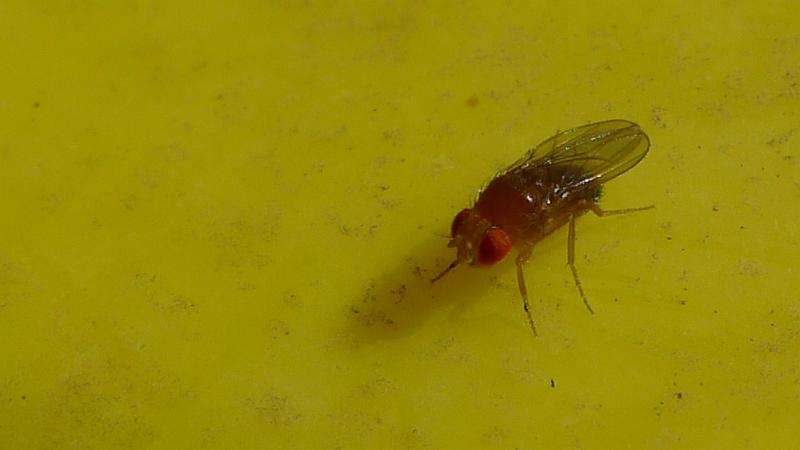'Zelda' protein plays flap-open role in early embryo development, researchers find

New York University biologists, in collaboration with scientists at the Stowers Institute for Medical Research, have identified a mechanism that promotes activation of genes critical for the initiation of embryonic development.
In a paper published in the journal Genome Research, Christine Rushlow, a professor of biology at NYU, and Julia Zeitlinger, a principal investigator at Kansas City's Stowers Institute, write that our genes are activated by regulatory factors that bind to the control regions of genes called "enhancers"—a process necessary to turn them on at the right time during development. How they gain access to the enhancer regions when they are wrapped in proteins that form the chromosome structure is of great interest to scientists.
Rushlow and Zeitlinger find that in the fruit fly embryo, a protein called Zelda is responsible for "opening up" the enhancer regions so that other regulatory factors can gain access and bind to them, thus enabling activation of the associated genes. They also find that enhancer regions appear to be inherently "closed"—that is, they like to be wrapped in proteins, more so than other non-enhancer regions of the genome, and Zelda tackles the regions to open them up.
"It makes sense that enhancers are intrinsically closed because you do not want developmental genes to turn on inadvertently," says Rushlow, part of NYU's Center for Developmental Genetics. "Instead, it is important that they are tightly controlled so they are active only at the right time and right place. Otherwise, tissue and organs could end up in the wrong place or not form at all."
"We suspect that the more these enhancers are intrinsically closed, the better they can be regulated," says Zeitlinger, who is also an assistant professor at the University of Kansas Medical Center. "It may be counterintuitive, but the tight enclosure allows Zelda to open these enhancer regions just enough for other more tissue-specific factors to come in without risking the enhancers becoming active at the wrong time or place."
The findings, the researchers note, point to a newly found and vital role for this protein.
"Our results demonstrate the significance of a mechanism that scouts out enhancers across the genome to prime them for later activation by tissue-specific factors," says Rushlow.
"Zelda allows many different factors to gain access, thus helping them establish the different tissues of the embryo—for example, muscle and nerves."
The research showed that when Zelda was absent, the binding of other factors such as the Dorsal protein, which is important for proper dorsal-ventral (back-belly) patterning of the fly body, was greatly reduced at target enhancers, and instead redistributed to other regions of the genome that are inherently open.
The researchers used Drosophila, or fruit flies, to investigate these regulatory networks. The fruit fly has the advantage of being a tractable genetic model system with a rapid developmental time, and many of the genetic processes identified in flies are conserved in humans. Additionally, pioneering fly research has led to many of the key discoveries of the molecular mechanisms underlying developmental processes in complex animals.
The study brought together Rushlow, who discovered Zelda and is an expert in genetic regulatory networks in development, and Zeitlinger, a genomics and systems biology expert whose laboratory focuses on how transcriptional mechanisms regulate genome activity.
"I had wanted to work with Julia, and this was a wonderful opportunity for us to combine our complementary areas of expertise in a truly synergistic fashion," says Rushlow. "Our collaboration is a marvelous example of how a problem can be viewed from different perspectives, a systems view and an individualistic view of single regulators, and result in novel and significant discoveries."
Journal information: Genome Research
Provided by New York University


















